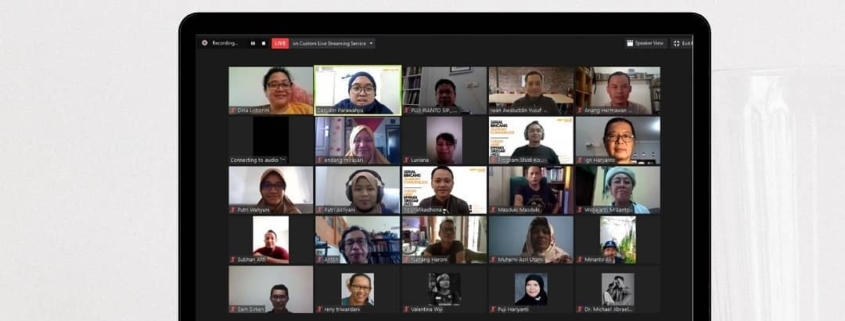AES Forum: The History of Gender Sensitive Journalism in the Japanese Colonization Era in Indonesia
Many say that the Japanese Population Age was a New Age, but it is also widely known as the Darkest Age of Colonialism. There are many stories of how the atrocities during the Japanese occupation were recorded in the oral history and the mass media published at that time.
On August 29, 2020, in the discussion of the Amir Effendi Siregar (AES) Forum, Iwan Awaluddin Yusuf, an UII Lecturer in Communication Science Department who has researched a lot about gender-sensitive journalism, shared his data findings on the Japanese colonization in Indonesia. This fact is widely published in the media reporting on women. How women are represented in Japanese media and journalistic techniques. Not only in newspaper coverage, but also in comics.
Afraid to be taken away
At that time Indonesian women were very afraid to look good. “They are afraid, so they will dress as badly as possible for fear of being taken away,” said Iwan. At that time women had to give their energy, thoughts, skills, and even possessions for the benefit of the Japanese colonizers.
So women who are good, beautiful, healthy, polite will be taken as jugun ianfu (comfort women who are actually prisoners for sex slaves during the Japanese occupation) or fujinkai (female soldiers who support Japan) who help the war to expand colonization in East Asia.
At that time, the media in Indonesia became a propaganda medium. In fact, not only journalistic media but also comics always portray women as beautiful, able to provide good and healthy meals for families, able to look after children.
Japan is also trying to drown out the narrative of American women. At that time, America wanted to show that women must have an equal position with men with various abilities and intelligence. Meanwhile, Japan, with advertisements in its media, depicts a good woman as being gentle and capable of taking care of the household.
This is also confirmed by Galuh Ambar, who researched the construction of Indonesian women in the Japanese era. She, through the IVAA grant program, quoted the magazine Pandji Poestaka, which described the construction of new women’s ideas in the household. Pandji Poestaka, for example, wrote, “Now we are facing a new world, a new order, heading for greater east Asia under the leadership of old brother Nippon. Mothers are not the least of our obligations in achieving that noble ideal. Our first duty is to completely eliminate all bad western influences, to clean the household from the smell of the west. ”
At that time the comics became a propaganda tool. You can see the comic Sembadra and Srikandi. In the comic, the Suprapti-Sutarti brothers are depicted in different characters. Suprapti is a girl from home, while Sutarti is a girl who likes marching training, is brave, and manly. Two girls like that who would help Japan realize its dream of becoming Asian leaders at that time.




